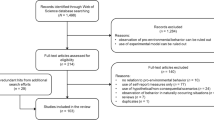Abstract
Shikake in a certain environment is a trigger that stimulates a person to change his behavior in the environment. When changing his behavior, he first needs to perceive the environment in a different way. In this study, the author coined “landscape foreignization” which means the phenomenon that landscape built on “one’s self” and “an environment” around him takes another form in a certain way. The purpose of this study was to examine the possibility of designing “Shikake” which stimulates a person to “foreignize” an over-familiar landscape. Five cases were analyzed by using physical and psychological approaches, and then Shikakes for landscape foreignization used in each case were clarified, plotted on the chart and compared. The results show that Shikakes for landscape foreignzation are designed using four different characteristics: “Materials,” “Tools,” “Mode” and “Code.” The comparison between five cases using these characteristics indicates that the combined use of two characteristics causes landscape foreignization. It also reveals that Shikake does not always have to be introduced to both “an environment” and “a self” at the same time, and that either physical or psychological Shikake alone can also lead to the phenomenon. This suggests that the phenomenon can take place without physical Shikake because psychological Shikake eventually can change subject’s behavior or perception toward an environment.


















Similar content being viewed by others
Notes
Studies on “MANAZASHI” originate from the concept of “MANAZASHI”, or gaze, used by Michel Foucault who describes that people in the modern age started to take an examining gaze at an object. One of the representative studies is “The Tourist Gaze”, published by John Urry, which indicates that tourists take a unique and extraordinary gaze or perspective at landscapes.
“Code” described here means “Code” used in semiology and structuralism and is a system of words that determine the meanings of something shared by people belonging to a certain culture. Louis Ferdeinand de Saussure, “the father of Semiology,” mentions that “la langue” is the most important and essential code for human beings to construct and articulate their world, but the code also includes non-verbal implications.
References
Berque A (1990) Nihon no fûkei, Seiô no keikan, soshite zôkei no jidai (Le Paysage au Japon, en Europe, et à l’ère du paysagement), Kodansha, Tokyo
Hanamura C, Kaga H, Masuda N (2013) The study for the landscape foreignization based on the view change caused by the art installation. J Jpn Inst Landsc Archit 76(5):571–574
Hara K (2005) Ex-formation, Chuokoron-shinsha, Tokyo
Matsumura N, Leifer L (2013) Preliminary considerations on Shikake design process. In: Technologies and applications of artificial intelligence (TAAI2013) (to appear)
Nakagawa S (2008) Fukeigaku. Kyoritsu Shuppan, Tokyo
Nakamura Y (1982) Fukeigaku nyumon, Chuokoron-shinsha, Tokyo
Nihon no Bigaku 24 (1996) PERIKANSHA Publishing, Tokyo
Okada M (2003) Tehcnoscape. Kajima Institute Publishing, Tokyo
Shirozu N, Matsushita M, Hanamura C (2014) Workshop design for fostering foreignization on a familiar place and its evaluation. Inst Electron Inf Commun Eng J97-D(1):3–16
Simmel G (1913) Philosophie der Landschaft, Die Güldenkammer 3Jg, Heft II, pp 635–644
Steiner P (1984) Russian formalism: a metapoetics. Cornell University Press, New York
Umaki T, Yoshimura A (2000) A study on landscape value generation through analysis of diaries on Japanese round-trip gardens. J Jpn Inst Landsc Archit 63(5):573–576
Author information
Authors and Affiliations
Corresponding author
Rights and permissions
About this article
Cite this article
Hanamura, C. Study on design of Shikake for landscape foreignization. AI & Soc 30, 527–536 (2015). https://doi.org/10.1007/s00146-014-0553-8
Received:
Accepted:
Published:
Issue Date:
DOI: https://doi.org/10.1007/s00146-014-0553-8




